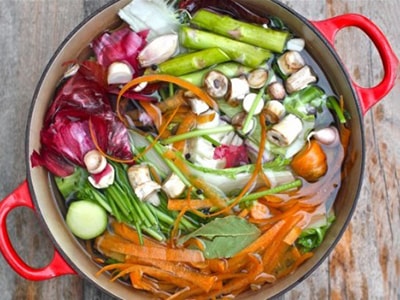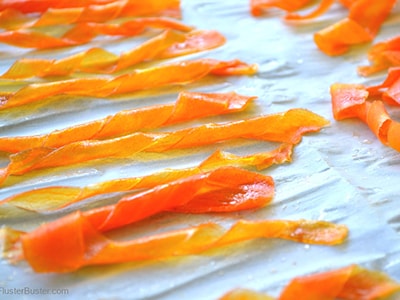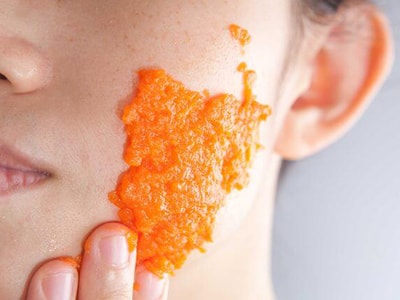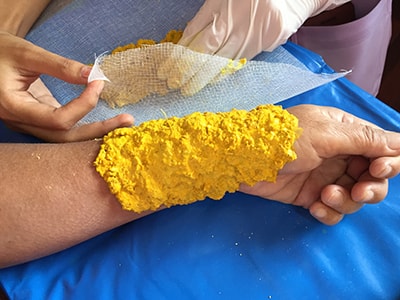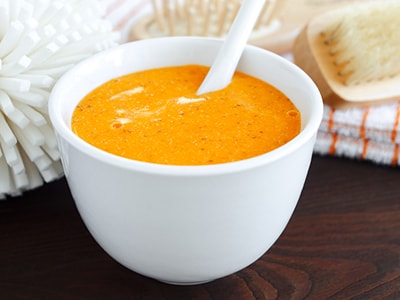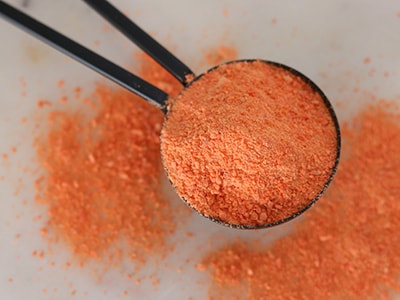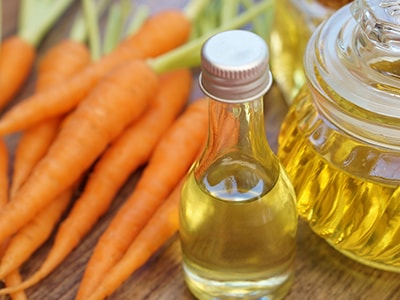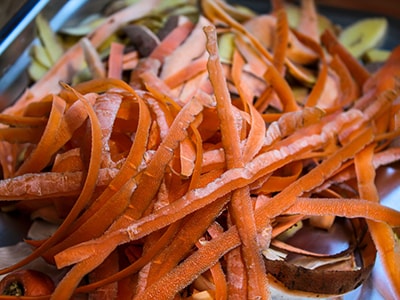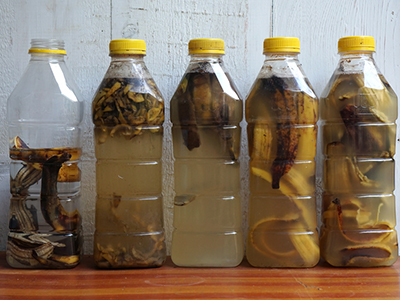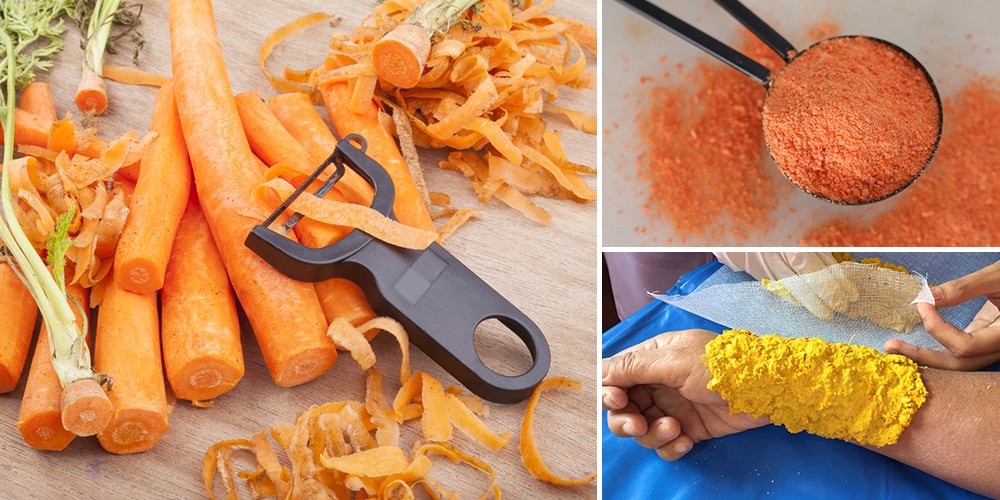
Don’t Throw Away Carrot Peels, Do This Instead!
Are you the kind who likes to peel carrots when preparing food or leave the skin as it is? We were told how the nutrients are concentrated in the skin and that carrots are better consumed with their peel. However, this might not apply to some recipes and some people’s preferences.
Carrot skin tends to shrink and turn dusty under the heat, making them appear less appetizing. Thus, if you steam or bake them in the oven, you may want to consider peeling the vegetable first. Other people also don’t like the earthy taste and texture of the peels and choose to discard them.
If you are one of those who prefer to skin their carrots, what do you do with the peels afterward? They probably end up in the trash can. But before throwing them away, did you know that there are many ways you can reuse carrot peels to maximize their health benefits?
10 Uses of Carrot Peels
Check out how you can repurpose carrot peels:
Vegetable Stock
If you are fond of upcycling fruit and vegetable leftovers, the easiest thing to do is to prep them for vegetable stock. Vegetable broth gives a healthier boost to dishes with its concentration of nutrients. Carrot peel is one of the most commonly used ingredients for preparing a hearty vegetable stock from food scraps. But remember, always make sure they are thoroughly washed before using them in your food.
Boil carrot peels as they are or with other vegetable peels and season with salt and pepper. Keep the stock in the fridge for future use such as for making soups, casseroles, sauces, curry or rice.
A soup made from leftover carrot peels is one bowl of healing and immune-boosting comfort food. People with high blood sugar levels can benefit much from this. The compounds found in carrots such as carotenoid, vitamin A and fiber manage the sugar level and prevent diabetes-related complications. This recipe is also ideal for people wanting to lose weight given its high fiber content.
To make a hearty cream soup, boil carrot peels, garlic, onion, celery sticks and vegetable stock in a saucepan. Simmer until the vegetables are tender and remove from heat. Blend and add almond powder adding more water if the soup is too thick. Top it with chopped parsley and celery and enjoy this heaping bowl of healthy goodness.
Carrot Peel Chips
Have a guilt-free snack with a delicious serving of crunchy carrot peel chips. It is easy to make and it’s a suitable snack for kids as well. Carrot peel is rich in antioxidants like beta-carotene, vitamin C and niacin. These are beneficial for eyesight and overall health.
For carrot chips, you will only need some olive oil, salt pepper, and an oven. Simply coat the bottom of a baking pan with oil, line the carrot peel over, and season them. Bake in a moderately hot oven at about 400⁰F (204⁰C) for 10 minutes or more until crispy.
Candied Carrot Peels
If you crave something sweet, candied carrot peels are quite a reasonable indulgence. You can satisfy your sweet tooth while getting the most from your veggie serving. Kids will no doubt enjoy this delectable snack. Strip the carrot peels wider into curls when peeling and you can use them as a garnish for cakes and pastries.
To prepare, boil 1 cup of water and 1 cup of sugar over medium heat. Add the carrot strips and reduce the heat to medium-low and allow to simmer for 15 minutes. Drain them in a wire mesh and let them cool. Spread the cooled carrot peel strips in a lightly-greased baking pan. Bake at 225⁰F for 30 minutes or until the carrot candy becomes translucent.
Carrot Peel Pesto
Break away from the usual green pesto with this orange twist from carrot peels. You can use it to toss pasta or make it a little thicker for use as a veggie dip or spread. Carrot peel pesto has the essential nutrients you need for building better eyesight and proper immunity.
Create your colorful version of pesto by mixing 3 cups loosely-packed carrot peels and ½ cup chopped walnuts in a blender. Add in ½ cup grated parmesan, ½ clove garlic, ¼ tsp. kosher salt and blend to a rough paste.
Slowly stream in ¼ cup extra virgin olive oil with the blender motor still running. Process the mixture into a uniform paste to create the pesto spread. If you want to use it in pasta, increase the amount of olive oil to ½ cup.
⇒ 3 Ingredient Survival Biscuit That Can Last Up to 100 Years (Video)
Skin Care
Carrot is one of the useful plants for treating skin problems. Its antioxidants are beneficial for slowing down skin aging and improving complexion. Carrot is also great for treating oily skin by flushing away oil and toxins.
Achieve radiant and glowing skin by drinking carrot juice daily and making a mask out of the peel. Crush the carrot peel and apply the paste all over your face. Leave it on for 20 minutes before rinsing and enjoy the youthful and vibrant glow.
Poultice for Wounds
With its effective antibacterial properties, carrot peel is also an excellent treatment for abscesses, ulcers and wounds.
Just apply a crushed peel as a poultice on the affected area for a few days until the wounds and abrasions are healed.
Hair Care
Carrot is packed-filled with nutrients that also benefit hair health and its proper growth. Its vitamins A and E are excellent components in improving hair growth and protection against premature graying. Carrot peel may also be used for taming frizzy hair.
Prepare this hair care essential by blending carrot peels with olive oil and a ripe banana. Use the mixture as a hair mask and leave it on for 4 hours before rinsing with warm water.
Powdered Carrot Peel
If you want to extend the shelf life of carrot peels and make them available for various uses, grind them into powder. You can add this to curries, sauces, soups, cakes, pastries and other dishes to boost their nutritional content and taste. Powdered carrot peel can be added to lukewarm water, to serve as a diuretic for water retention problems.
Wash the peels thoroughly and refrigerate them overnight in a sealed plastic bag. Take out the peels and wash them again before draining. Dry them in a dehydrator and allow them to cool. Put the dehydrated peels in a glass jar to check for excess moisture.
If no condensation forms on the glass, proceed blending them into powder. Otherwise, you need to dehydrate them a little longer to ensure that mold and bacteria will not form in the carrot powder. Grind them in a food processor until powdered and store them in an airtight container.
Carrot oil
Give ordinary dishes a gourmet accent by drizzling them with carrot oil made from their peel. You can add it to soups and many other culinary creations for added sweetness, essence and nutrition.
To make your very own gourmet carrot peel oil, you will need one cup of grapeseed oil for every cup of carrot peel. Start by cleaning the carrot peels and plunging them in cold water. Remove the peels from the water and allow them to dry on paper towels. You may use a dehydrator to dry them thoroughly, making sure that there is no excess moisture in them.
Put the dried peels in a pan and add the grapeseed oil to cover and soak them. Turn the heat to low, just enough for bubbles to form on the surface but not necessarily sizzle like in frying. Allow the peels to cook and soak for about 15 minutes. Turn off the heat and let the infusion steep for an hour or longer for a potent and brighter-colored oil. Strain the oil into a clean and dry container and keep it in a dry place until ready for use.
Compost
If you don’t feel like doing anything with the carrot skin you had just peeled, then put them into the composter. Vegetable scraps are biodegradable and they leak nutrition back into the soil for the benefit of other garden plants. Composting is one of the many ways you can repurpose a carrot peel to make the most out of its nutritious components.
The Bottom Line
Repurposing vegetable scraps is valuable and significant not just for the environment but also for your household. Fruit and vegetable peels like carrots are full of nutrients, sometimes even more potent than the usable parts themselves.
One good way you can make use of these benefits is by upcycling them into something more special. You can prepare the skins in various ways now that you know how versatile they are. Most vegetable and fruit scraps are edible and can be turned into new dishes for the whole family.
When recycling any type of peel for your meals, remember to wash them thoroughly before preparing. It will remove any dirt, traces of pesticides and lingering debris, to make it sanitary and prevent many food-borne diseases.

